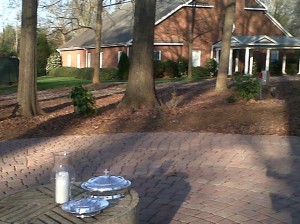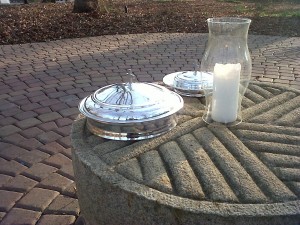Labybrinths
Labyrinths have been used for spiritual purposes as far back as 5,000 years. They became popular among Christians during the Middle Ages, though the oldest existing labyrinth was placed in the Church of Reparatus in Algeria in the 4th century. Walking a labyrinth became an alternative prayer pilgrimage when the Crusades made visits to the Holy Land too dangerous.
Unlike mazes, in which there are multiple path ways and unforeseen dead ends, a labyrinth has a single path leading to the center. You cannot get lost in a labyrinth. It always leads you home.
Sardis Baptist’s Labyrinth and Prayer Garden is located in front of our meetinghouse, adjacent to the parking lot. Written guides are available at the entrance. The labyrinth is lit in the evening until 10 PM.
One way to pray at our labyrinth is to use a medieval practice for a three-fold act of prayer.
1st MOVEMENT – ENTERING
The first step is letting go. Ancients called this “purgation.” As you walk into the labyrinth let go of worries, busy thoughts, and emotions. These “purging” prayers are a way of cleaning your spiritual windows.
2nd MOVEMENT – CENTERING
When you reach the center of the labyrinth, rest. You may want to sit down, or lay back on the millstone, looking up at the trees. Here, you are seeking “illumination.” Now that you have cleaned your windows, let the light come in. Seek a word from God.
3rd MOVEMENT – RETURNING
As you retrace your steps through the labyrinth, remember that the presence of God goes before you. Reflect on the insights or blessings you’ve received. The 3rd step is to seek “union” with God as you unwind and return to what you left behind – strengthened by the provisions you received from God.
Sardis Labyrinth







